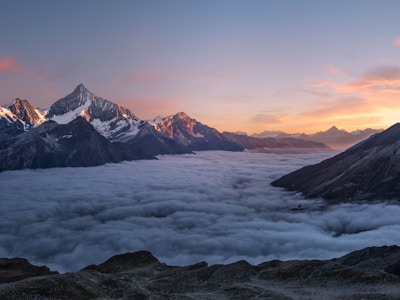Your Complete Guide toMeteor Showers
Discover when and where to watch meteor showers with our comprehensive guide. Get predictions, viewing tips, best locations, and join our community of stargazers.
What Our Community Says
Dr. Elena Rodriguez
"This is hands down the most comprehensive meteor shower guide I've encountered. The calendar predictions are remarkably accurate, and the photography tips helped me capture some of my best shots ever."
Marcus Thompson
"As someone new to stargazing, this website made meteor shower observation accessible and exciting. The beginner's guide is perfectly structured, and the community is incredibly welcoming."
Yuki Tanaka
"The advanced photography techniques section transformed my meteor photography. The stacking tutorial helped me create my first meteor shower composite that was featured in Astronomy Magazine!"
How to Use This Website
Browse upcoming meteor showers with detailed information including peak times, visibility, and optimal viewing conditions.
Discover the best dark sky locations near you using our interactive map and location recommendations.
Study our comprehensive guides covering everything from basic observation to advanced astrophotography techniques.
Connect with fellow observers, share your experiences, and participate in organized observation events.
Ready to Start Your Journey?
Join thousands of stargazers who rely on our platform for their meteor observation adventures.
Upcoming Meteor Showers
World's Best Observation Sites



Quick Start Observation Tips
Avoid white light for 30 minutes before observing to let your eyes fully adapt to darkness
Don't look directly at the radiant point, observe the sky 60-90 degrees around it instead
Most meteor showers are most active from midnight to dawn
Choose clear, cloudless nights and check visibility forecasts
Observer Experiences
Observed from Rocky Mountain National Park at 11,000 feet. Saw 47 meteors in one hour! Three were brilliant fireballs with trails lasting several seconds.

Observed at 4,500 meters altitude with incredibly transparent air. Captured multiple exposure meteor trails - absolutely stunning results!

Featured Photography



Community Events
Frequently Asked Questions
When is the best time to observe meteor showers?
The best time is typically between midnight and dawn when the radiant point is highest in the sky. The exact peak time varies for each shower and is listed in our calendar. Avoid nights with full moon for optimal viewing.
Do I need a telescope to see meteors?
No! Meteors are best observed with the naked eye because they move quickly across large areas of sky. Telescopes have too narrow a field of view. Binoculars can be helpful for some observations but aren't necessary.
What's the difference between meteors, meteoroids, and meteorites?
Meteoroids are space rocks in orbit around the Sun. When they enter Earth's atmosphere and burn up, creating the bright streak we see, they're called meteors. If any material survives to reach the ground, it's called a meteorite.
How do I photograph meteors?
Use a DSLR or mirrorless camera with a wide-angle lens (14-35mm), set to manual mode. Use f/1.4-2.8 aperture, ISO 1600-6400, and 15-30 second exposures. Mount on a sturdy tripod and take many shots to increase your chances.
Why do some meteor showers have more meteors than others?
The number of meteors depends on the density of debris in the comet's trail and how directly Earth passes through it. Some showers like the Geminids have dense, well-established debris trails, while others are more sparse.
Can I see meteors from the city?
You can see the brightest meteors from cities, but light pollution will hide most faint ones. For the best experience, travel to a dark sky location at least 50 miles from major cities. Even suburban areas can show significant improvement.
How accurate are the meteor shower predictions?
Peak times are quite accurate (within a few hours), but rates can vary significantly due to factors like the age of the comet trail, gravitational perturbations, and observing conditions. Weather is the most unpredictable factor.
What should I bring for a meteor watching session?
Essentials include: red flashlight, comfortable chair or blanket, warm clothing, snacks and drinks, star chart app, and patience! Avoid white light which ruins night vision. A notebook for recording observations is also helpful.
Still Have Questions?
Can't find what you're looking for? Our community is here to help!
Ask the CommunityEverything You Need for Stargazing
Track all upcoming meteor showers with peak times and visibility predictions.
Find dark sky locations near you with minimal light pollution for optimal viewing.
Learn how to observe meteor showers with equipment tips and safety guidelines.
Share your experiences and photos with fellow meteor enthusiasts worldwide.
Weather-Integrated Predictions
Our smart system combines astronomical data with real-time weather forecasts to give you the best viewing recommendations for your location.
Real-time Updates
Get instant notifications about weather changes and viewing conditions.
Location-Based
Personalized predictions based on your exact location and local conditions.
Accuracy
Advanced algorithms provide highly accurate visibility forecasts.
Quick Start for Beginners
Choose a Meteor Shower
Check the calendar for upcoming meteor showers and select the best viewing time.
Prepare Equipment
Gather necessary equipment based on our guide - most observations only need naked eyes.
Start Observing
Head to your observation site and enjoy the spectacular meteor shower display.
Start Your Stargazing Journey Today
Join thousands of meteor enthusiasts who never miss a spectacular celestial show.